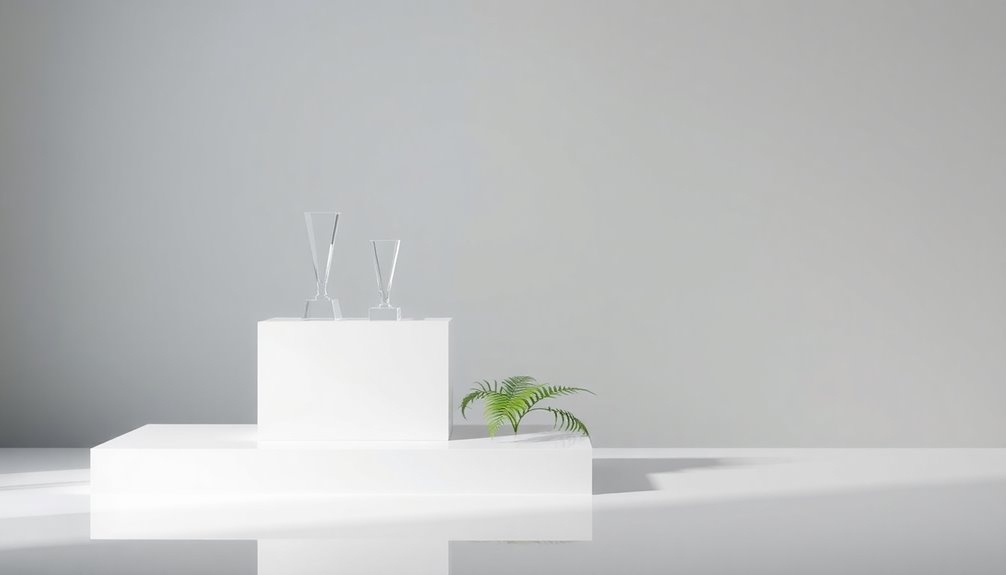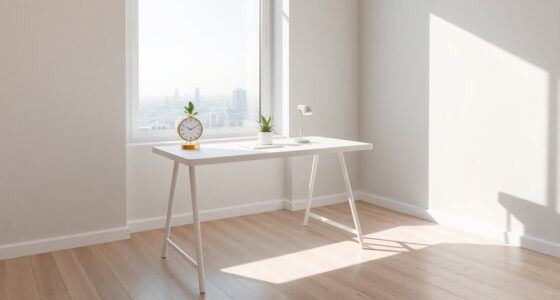Minimalist design awards celebrate exceptional achievements in simplicity by recognizing projects that emphasize functionality and innovative use of space. They highlight the beauty of clean lines and thoughtful materials, showcasing designs that resonate with users. Award-winning works, like those from Jinqiao Ouyang and Zhenfei Wang, demonstrate how minimalism can enhance environments and experiences. You'll find plenty of inspiring examples that illustrate these principles, and there's much more to discover about this fascinating design philosophy.
Key Takeaways
- Numerous prestigious awards, like the Iron A Design Award, celebrate outstanding minimalist projects emphasizing simplicity and functionality.
- Award-winning designs, such as Jinqiao Ouyang's "Simplism Exploration," exemplify innovative use of space and tranquility.
- The A Design Award recognizes minimalist efforts, with Zhenfei Wang's "Less" store design earning a Bronze for its user-centered approach.
- Future award trends will focus on sustainability, incorporating eco-friendly materials and energy-efficient systems in minimalist design.
- The 2025 Sky Design Awards aim to promote groundbreaking collaborations in minimalist design, highlighting excellence in simplicity.
The Philosophy of Minimalism in Design

Minimalism in design embodies the essence of simplicity, where "less is more" truly shines.
You'll notice that this approach prioritizes functionality and innovative use of space, enhancing both aesthetics and your quality of life. Award-winning projects like Jinqiao Ouyang's Simplism Exploration demonstrate how minimalism can harmonize essential elements, creating tranquil environments that resonate with the principles of wabi-sabi.
As you explore minimalist designs, you'll see how they meet industry standards by incorporating clean lines and thoughtful material choices. These designs garner recognition not only for their beauty but also for their capacity to effectively communicate brand identity, as seen in Zhenfei Wang's Less store.
Embracing minimalism can lead to a more fulfilling and uncluttered existence. Additionally, minimalist design often aligns with user-centric solutions, ensuring that the end product resonates deeply with its intended audience.
Celebrating Award-Winning Minimalist Projects
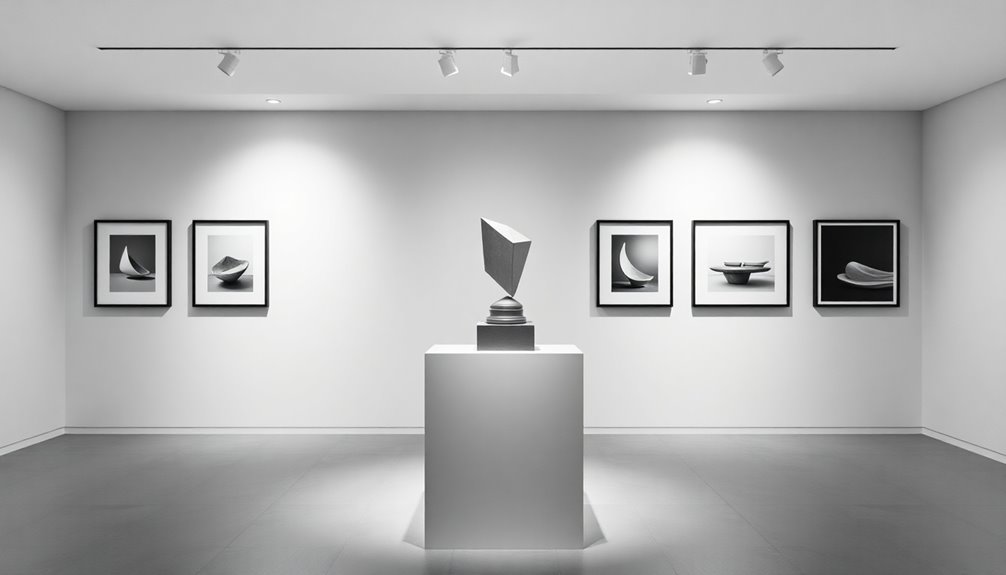
Award-winning minimalist projects showcase the true potential of simplicity in design.
From Jinqiao Ouyang's "Simplism Exploration," which won the Iron A Design Award for its exceptional innovation in a villa's interior, to Zhenfei Wang's "Less" store design, celebrated with a Bronze at the A Design Award for its creativity, minimalist design is making waves.
The AIA Potomac Valley Excellence in Design Awards also recognized "House in a Clearing," a Gold Award winner emphasizing nature integration.
Additionally, UBCO received a Gold Accolade at the Good Design Awards for its elegant simplicity.
Looking ahead, the 2025 Sky Design Awards aim to foster innovative collaborations, celebrating exceptional talent in minimalist design and providing crucial recognition within the international design awards landscape. Moreover, embracing self-care and mindfulness in the design process can enhance creativity and result in more impactful projects.
The Impact of Minimalism on Contemporary Architecture
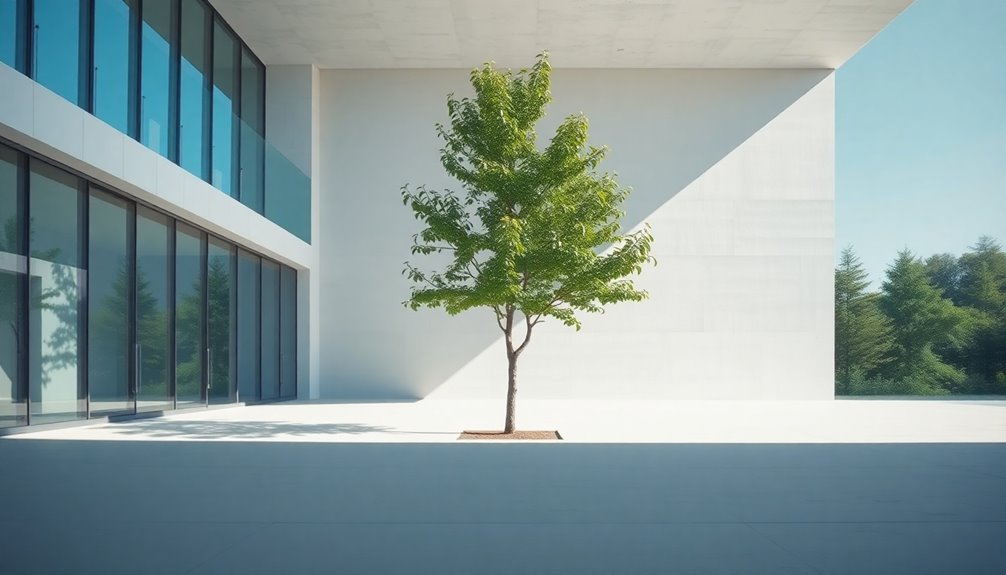
As architects embrace the principle of "less is more," contemporary architecture reflects a profound shift towards simplicity and functionality.
Minimalism emphasizes innovative layouts and sustainable practices, creating award-winning designs that challenge traditional boundaries. Projects like Jinqiao Ouyang's Simplism Exploration showcase interior space optimization, demonstrating how minimalism can enhance user experience.
By incorporating natural materials and a user-centered approach, these designs foster tranquil environments that celebrate simplicity and even imperfection through elements like wabi-sabi. This architectural trend often draws inspiration from traditional Indonesian style home decor, leading to a harmonious blending of cultural motifs and modern aesthetics.
This architectural trend not only sets new benchmarks for design excellence but also encourages future projects to address real-world challenges, contributing positively to society and the environment.
Ultimately, minimalism reshapes your perception of space, encouraging a harmonious living experience.
Insights From Industry Leaders on Minimalist Design

While many designers embrace the philosophy of "less is more," industry leaders often highlight how minimalist design transcends mere aesthetics to solve real-world challenges.
They emphasize that effective space design and thoughtful material selection are essential in creating innovative products that enhance user experience.
Award-winning projects like Zhenfei Wang's Less store and Jinqiao Ouyang's Simplism Exploration exemplify these principles, showcasing how minimalism can foster tranquility and order in living spaces.
Industry leaders recognize these designs for their excellence, often applauding their ability to address both commercial and recreational needs.
With increasing recognition at prestigious awards, minimalist design continues to inspire and set benchmarks within the industry, driving further innovation across various design disciplines. Additionally, the incorporation of natural materials can enhance the overall aesthetic and functionality of minimalist environments.
Future Trends in Minimalist Design
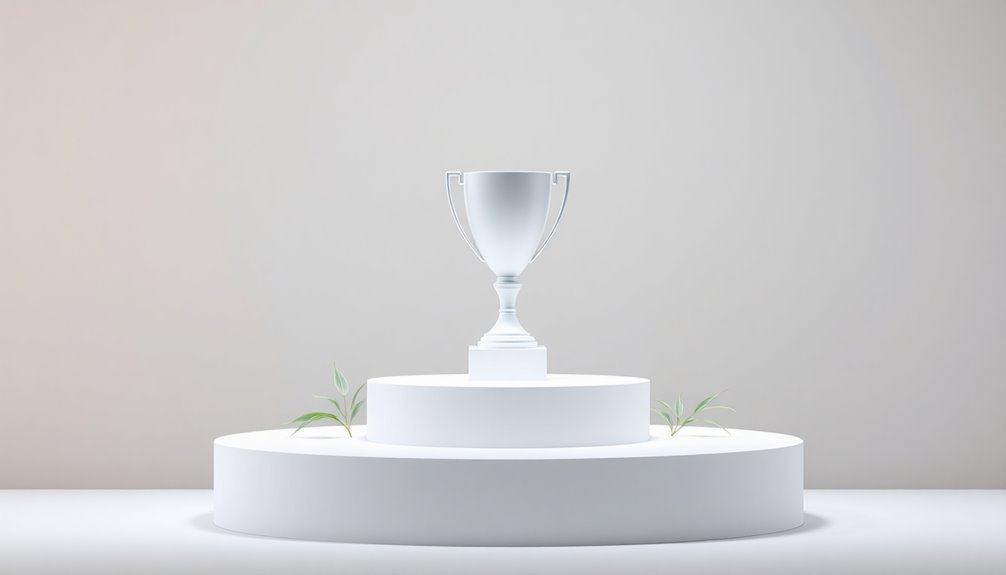
How will the future of minimalist design reshape our spaces? Expect a shift towards incorporating sustainable materials, addressing the growing demand for eco-friendly solutions.
Award-winning projects like Jinqiao Ouyang's Simplism Exploration illustrate how simplicity and functionality create harmonious living spaces. Future trends will also embrace wabi-sabi aesthetics, celebrating imperfection and creating tranquil environments that resonate deeply with you.
Retail spaces will increasingly utilize minimalist approaches to enhance customer experiences, emphasizing essential elements and reducing clutter. Design studios like QiaoXi Space Design will continue to push boundaries while maintaining a focus on order and simplicity. Additionally, the integration of energy-efficient systems will play a crucial role in creating sustainable environments that align with minimalist principles.
Frequently Asked Questions
What Are the Awards for Design Excellence?
When you think about awards for design excellence, several prestigious accolades come to mind.
The A Design Award celebrates innovative designs across various fields, while the Iron A Design Award focuses on interior and exhibition spaces.
The Good Design Awards in Australia evaluate projects based on innovation and quality.
Additionally, the AIA Potomac Valley Excellence in Design Awards highlight architectural achievements, and the Sky Design Awards connect designers with industry leaders for collaboration.
Who Initiated the Good Design Mark for Recognition of Excellence in Design?
So, you wanna know who started the Good Design Mark? Well, gather 'round, design enthusiasts!
It was the clever folks at Good Design Australia, back in 1958. They decided to sprinkle some recognition on the world of design, making it all shiny and prestigious.
With their keen eyes, they assess everything from aesthetics to sustainability.
Conclusion
In summary, embracing minimalist design not only enhances aesthetics but also promotes mental clarity. Did you know that 60% of consumers prefer brands that prioritize simplicity in their products? As minimalist design continues to evolve, you'll find its influence shaping everything from architecture to everyday objects. By recognizing and celebrating these award-winning projects, you're not just acknowledging beauty; you're also contributing to a movement that values simplicity and functionality in our increasingly complex world.
